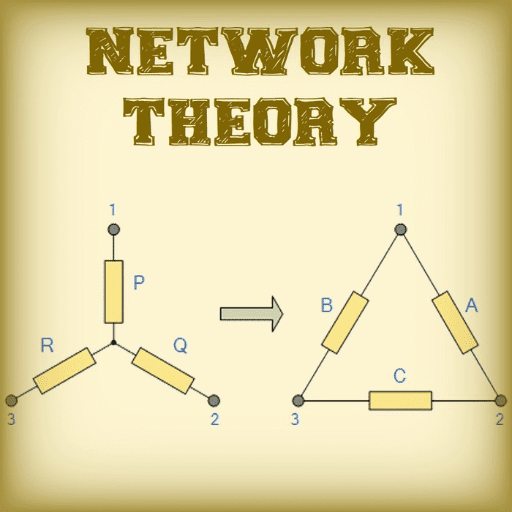Eigenvalues and Eigenvectors | Control Systems - Electrical Engineering (EE) PDF Download
| Table of contents |

|
| Introduction |

|
| Eigenvalues |

|
| Eigenvectors |

|
| Types of Eigenvector |

|
| Applications of Eigenvalues in Engineering |

|
| Conclusion |

|
Introduction
Eigenvectors and eigenvalues are core concepts in linear algebra for square matrices and linear transformations. An eigenvector is a non-zero vector that, under a matrix transformation, only scales by a factor, remaining parallel to its original direction. This scaling factor is the eigenvalue, satisfying , where is the matrix, is the eigenvector, and is the eigenvalue.
Eigenvectors maintain their direction during transformation, while eigenvalues measure the scaling. They are vital in fields like engineering for stability analysis, quantum mechanics for energy states, and machine learning for dimensionality reduction (e.g., in Principal Component Analysis). These concepts are essential for solving problems in mathematics, physics, and computational disciplines.

Eigenvalues
Eigenvalues are the scalar values associated with the eigenvectors in linear transformation. The word ‘Eigen’ is of German Origin which means ‘characteristic’.
Eigenvalues are scalar values associated with a square matrix that measure how a matrix transforms a vector. If a matrix AAA multiplies a vector vvv, and the result is a scalar multiple of vvv, then that scalar is the eigenvalue corresponding to the eigenvector vvv. Eigenvalues are widely used in fields like physics, engineering, and data science.
Hence, these characteristic values indicate the factor by which eigenvectors are stretched in their direction. It doesn’t involve the change in the direction of the vector except when the eigenvalue is negative. When the eigenvalue is negative the direction is just reversed.
The equation for eigenvalue is given by
Av = λv
Where,
A is the matrix,
v is associated eigenvector, and
λ is scalar eigenvalue.
Eigenvectors
Eigenvectors of a square matrix are non-zero vectors that, when multiplied by the matrix, result in a scaled version of the same vector. For a square matrix A, I define an eigenvector v as one that satisfies the condition Av=λv, where λ is a scalar. This scalar λ is called the eigenvalue of the matrix. To find the eigenvectors, I first need to determine the eigenvalues of the square matrix.
For a square matrix A of order n×n, I understand the eigenvector to be a column matrix of order n×1. When I find the eigenvector using the equation Av=λv, the vector v is called the right eigenvector of matrix A. It’s always multiplied on the right-hand side because matrix multiplication isn’t commutative. Generally, when I refer to an eigenvector, I mean the right eigenvector.
I can also find the left eigenvector of the square matrix A using the relation vA=vλ. Here, v is the left eigenvector and is multiplied on the left-hand side. For a matrix A of order n×n, this left eigenvector v is a row matrix of order 1×n.
The Eigenvector equation is the equation that is used to find the eigenvector of any square matrix. The eigenvector equation is,
Av = λv
Where,
- A is the given square matrix,
- v is the eigenvector of matrix A, and
- λ is any scaler multiple.
What are Eigenvalues and Eigenvectors?
For a square matrix A of order n×n, I can find its eigenvectors using the method below:
I know that an eigenvector satisfies the equation Av=λv. To solve this, I use the identity matrix I of the same order as A, which is n×n, and rewrite the equation as:
(A−λI)v=0
By solving this equation, I obtain various values of λ, which I label as λ1,λ2,…,λn. These values are called the eigenvalues, and each eigenvalue corresponds to its own eigenvector.
After simplifying the equation, I find v, which is a column matrix of order n×1. The eigenvector v is written as:

To find the eigenvector of a square matrix, follow these steps:
Step 1: I start by finding the eigenvalues of the matrix A using the equation det(A−λI)=0, where I is the identity matrix of the same order as A.
Step 2: The values I obtain from Step 1 are the eigenvalues, which I label as λ1,λ2,λ3,….
Step 3: Next, I find the eigenvector X corresponding to the eigenvalue λ1 by solving the equation (A−λ1I)X=0.
Step 4: I repeat Step 3 for the remaining eigenvalues λ2,λ3,…, to find their corresponding eigenvectors.
Types of Eigenvector
Types of Eigenvectors
When we calculate the eigenvectors of a square matrix, we find that they are of two types:
Right Eigenvector
The right eigenvector is defined as the one multiplied by the square matrix from the right-hand side. It is calculated using the equation:
Here, is the given square matrix of order , is one of the eigenvalues, and is the column vector matrix. The form of is:

Left Eigenvector
The left eigenvector, in contrast, is multiplied by the square matrix from the left-hand side. It is calculated using the equation:
VLA=VLλ
Where,
A is given square matrix of order n×n,
λ is one of the eigenvalues, and
VL is the row vector matrix.
The value of VL is,
VL = [v1, v2, v3,…, vn]
 |
Download the notes
Eigenvalues and Eigenvectors
|
Download as PDF |
Applications of Eigenvalues in Engineering
Eigenvalues have several key applications across various fields of engineering, including:
Linear Algebra
- Diagonalization: Eigenvalues enable the diagonalization of matrices, which simplifies computations and enhances the efficiency of solving linear systems.
- Matrix Exponentiation: Eigenvalues are essential for computing the exponentiation of a matrix, facilitating complex matrix operations.
Quantum Mechanics
- Schrödinger Equation: Eigenvalues of the Hamiltonian operator correspond to the energy levels of quantum systems, revealing the possible states of the system.
Vibrations and Structural Analysis
- Mechanical Vibrations: Eigenvalues represent the natural frequencies of vibrational systems, aiding in the analysis of system behavior. In structural analysis, they provide insights into the stability and performance of structures.
Statistics
- Covariance Matrix: Eigenvalues are utilized in multivariate statistics to analyze covariance matrices, offering information about the spread and orientation of data.
Computer Graphics
- Principal Component Analysis (PCA): Eigenvalues are applied in PCA to identify the principal components of a dataset, reducing dimensionality while preserving critical information.
Control Systems
- System Stability: Eigenvalues of the system matrix are crucial for assessing the stability of a control system, ensuring that the system’s response remains bounded through stability analysis.
Conclusion
Eigenvalues and eigenvectors are key ideas in math that help us understand how matrices work with vectors. They show us how a matrix can stretch or shrink a vector without changing its direction, which is super useful in things like engineering, physics, and data science. For example, they help make calculations easier, check if systems are stable, or figure out energy levels in quantum stuff. Learning how to find them for 2×2 and 3×3 matrices lets us solve tricky problems in a clear and smart way, connecting math to real-life uses.|
54 videos|83 docs|40 tests
|
FAQs on Eigenvalues and Eigenvectors - Control Systems - Electrical Engineering (EE)
| 1. What are eigenvalues and eigenvectors? |  |
| 2. How do you calculate eigenvalues and eigenvectors? |  |
| 3. What are the types of eigenvectors? |  |
| 4. What are some applications of eigenvalues and eigenvectors in engineering? |  |
| 5. Why are eigenvalues important in the study of dynamic systems? |  |

























